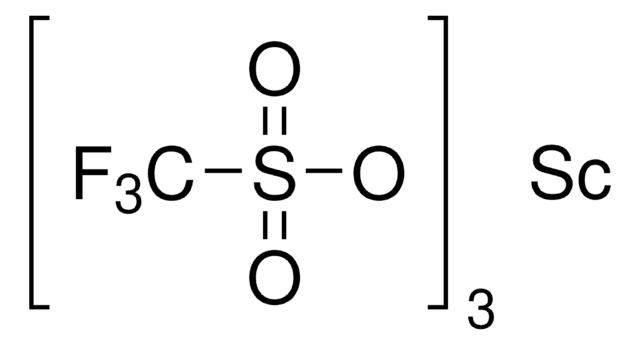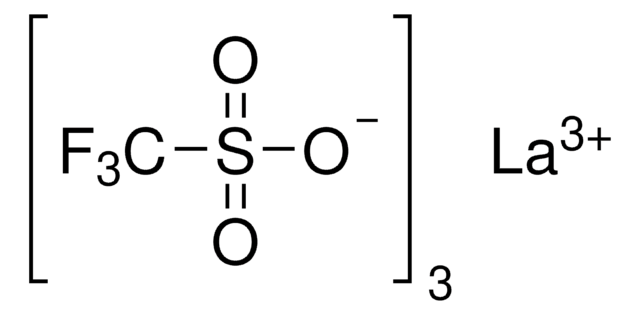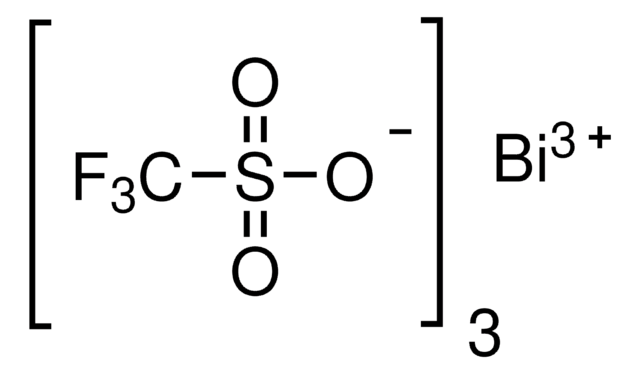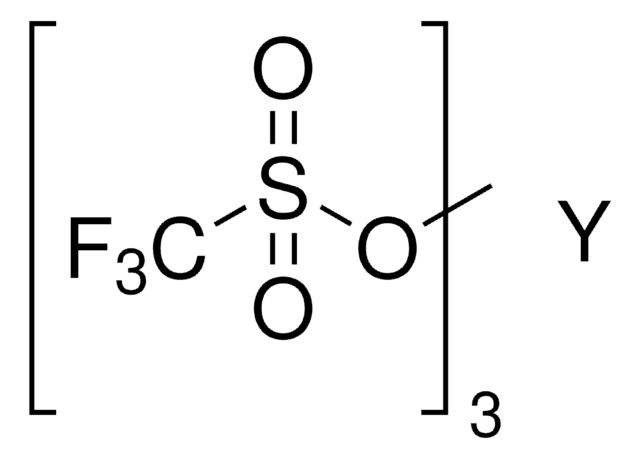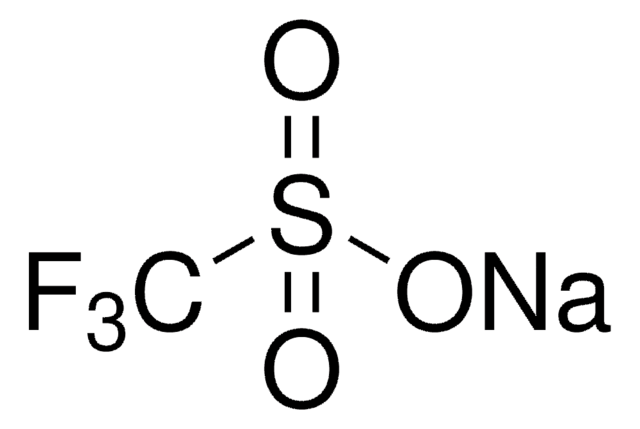405329
Ytterbium(III) trifluoromethanesulfonate hydrate
Yb 25-28 % (approx.)
Synonyme(s) :
Yb(OTf)3, Trifluoromethanesulfonic acid ytterbium salt, Ytterbium(III) triflate
About This Item
Produits recommandés
Composition
Degree of hydration, 1-2
Yb, 25-28% (approx.)
Pertinence de la réaction
core: ytterbium
reagent type: catalyst
Chaîne SMILES
[H]O[H].FC(F)(F)S(=O)(=O)O[Yb](OS(=O)(=O)C(F)(F)F)OS(=O)(=O)C(F)(F)F
InChI
1S/3CHF3O3S.H2O.Yb/c3*2-1(3,4)8(5,6)7;;/h3*(H,5,6,7);1H2;/q;;;;+3/p-3
Clé InChI
BUJKNFNMGRYZBV-UHFFFAOYSA-K
Vous recherchez des produits similaires ? Visite Guide de comparaison des produits
Catégories apparentées
Description générale
Application
- Synthesis of the dihydropyrimidine (DHPM) derivative monastrol, by Biginelli cyclocondensation.
- Cross-aldol reaction between ketone and aldehyde.
- Synthesis of β-keto enol ethers.
- Synthesis of deoxypenostatin A in a novel, stereoselective intramolecular Diels-Alder reaction.
Mention d'avertissement
Warning
Mentions de danger
Conseils de prudence
Classification des risques
Eye Irrit. 2 - Skin Irrit. 2 - STOT SE 3
Organes cibles
Respiratory system
Code de la classe de stockage
8A - Combustible corrosive hazardous materials
Classe de danger pour l'eau (WGK)
WGK 3
Point d'éclair (°F)
Not applicable
Point d'éclair (°C)
Not applicable
Équipement de protection individuelle
dust mask type N95 (US), Eyeshields, Gloves
Faites votre choix parmi les versions les plus récentes :
Déjà en possession de ce produit ?
Retrouvez la documentation relative aux produits que vous avez récemment achetés dans la Bibliothèque de documents.
Les clients ont également consulté
Articles
The Friedel–Crafts acylation is the reaction of an arene with acyl chlorides or anhydrides using a strong Lewis acid catalyst. This reaction proceeds via electrophilic aromatic substitution to form monoacylated products.
Notre équipe de scientifiques dispose d'une expérience dans tous les secteurs de la recherche, notamment en sciences de la vie, science des matériaux, synthèse chimique, chromatographie, analyse et dans de nombreux autres domaines..
Contacter notre Service technique
